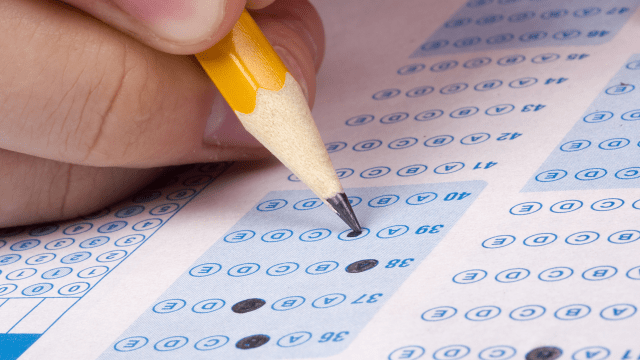We talk a lot about test prep, but not as much about what you should do when it’s time to sit down and actually take a test. Whether it’s for a class, a certification, an entrance exam, or something else, there are some simple ways to tackle test-taking that can help you do better and be less stressed in the moment.
Three steps to take on a test day
I went back to school recently at the age of 30 only to discover that the college landscape has changed drastically since I was an undergrad. I was turning my essays in on actual paper just a little over a decade ago and if I did that now instead of submitting my files through an online portal, I am not even sure my professors would know what to do with them. In two years of grad school, I’ve taken four tests on paper—and one of them came with the option to do it with a computer instead anyway. For a lot of classes these days, tests are done online, either in the classroom or at home, so obviously, if you’re taking an exam on your laptop, you have more options for keeping notes nearby or otherwise helping yourself out with the answers. The following tips are best for if the exam is in-person, whether on a computer or paper, and closed-book.
Step 1: When the test starts, do a “brain dump,” which, according to a tip sheet from Harvard, is just “[writing] down all the information you need on a scrap of paper.” Write down any formulas, vocab words, or main concepts you studied when preparing for the test. (If you can, study with mind-mapping or a method like SQ3R so you can easily remember the main ideas you jotted down.)
Step 2: Once you’ve created this in-the-moment cheat sheet, scan the test once, looking for questions you are sure you know the answer to. Answer those to knock out any you’re absolutely sure of so you can devote your time to what you’re unsure of without rushing.
Step 3: Go back and answer the questions you weren’t immediately confident about. With your tip sheet complete and the “easy” questions out of the way, you now have the whole test period to work through these.
What to keep in mind when taking a test
Make sure you have a way to keep track of the time. If you’re using a computer, that’s easy, but if not, you need to check beforehand that there is a clock in the room or wear a watch. Especially for certification or standardized tests, you’ll be checked beforehand to make sure you don’t have anything on you that could help you cheat, so pick a simple watch like this one. Once you get to the third step—the questions you’re unsure about—count how many there are and divide that number into how many minutes you have left, so you know exactly how much time you can allocate to each.
Preparing for your test is also key, which sounds obvious but is backed up by science. The more you’ve studied and prepared, the more relaxed you’ll be, which can help you do well. If you’re not prepared or not relaxed, take a minute to practice some mindfulness meditation so you can feel more at ease.

Leave a Reply
You must be logged in to post a comment.